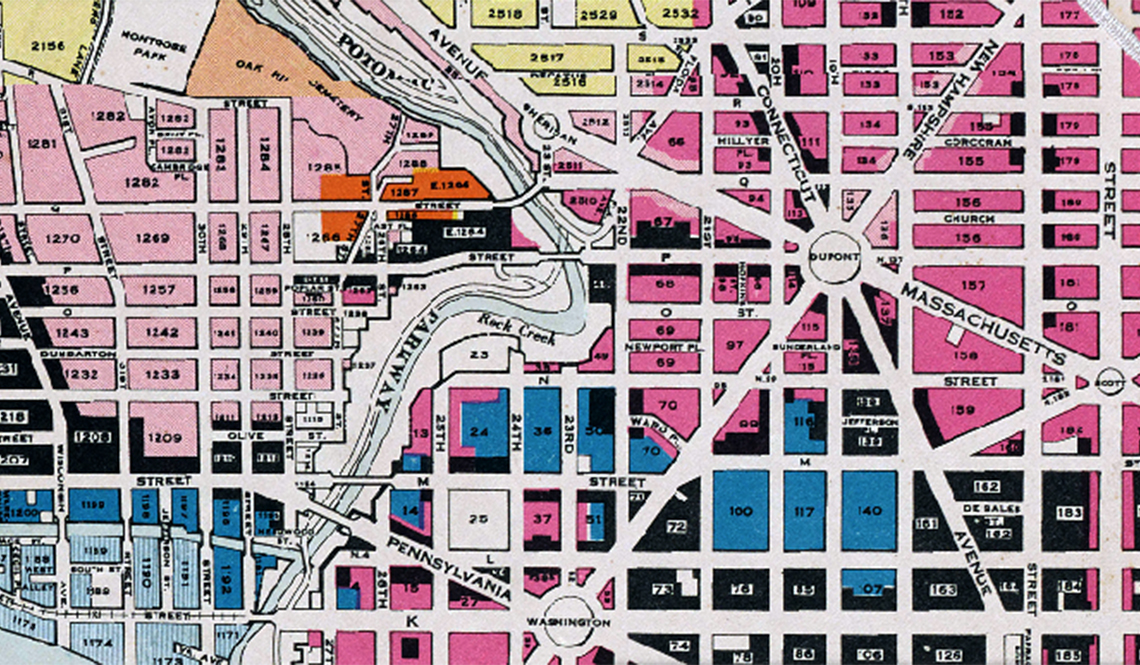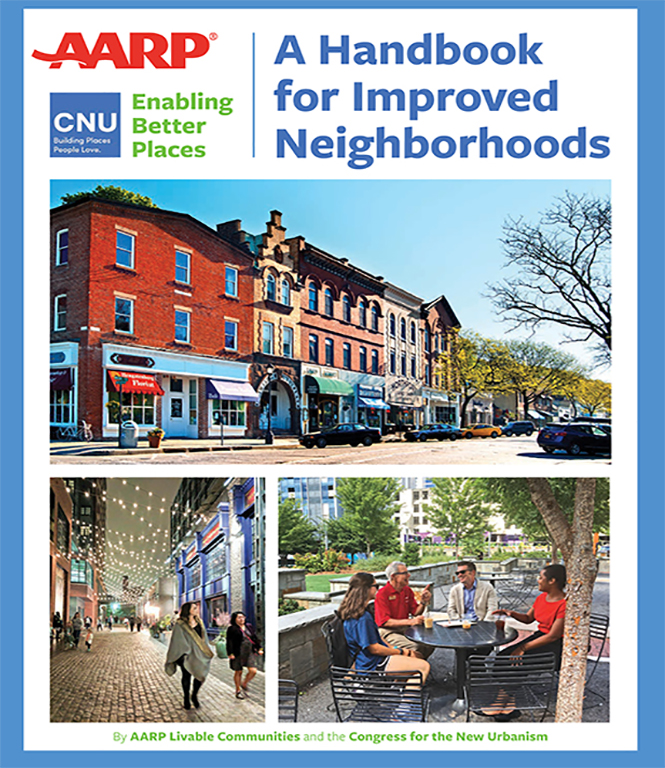Zoning is a Key Ingredient for Community Change and Improvement
AARP and livability experts nationwide are helping towns, cities and counties adapt their zoning codes to better serve residents of all ages

DC Office of Zoning
Zoning maps often use colors to represent different land uses, as represented in the pictured section of a 1936 zoning map of Washington, D.C. The pinkish red color represents a residential zoning district that allows all housing types, including apartments, single-family, row homes and group houses. Today, most cities use Geographical Information System (GIS) technology, which allows for hosting interactive zoning maps on websites instead of relying on the large paper maps that were once the norm. (Click on the image to see examples of more Washington, D.C., zoning maps.)
Zoning codes were established in the early 20th century as a way to manage how communities develop and what types of buildings (residential, commercial, industrial) and infrastructure can go where. In addition to controlling how land is used, zoning can also establish development standards such as building height, lot coverage and parking needs.
As automobile use in the United States became more popular, zoning codes were used to prioritize the automobile over pedestrians, separate uses (e.g., no businesses adjacent to houses) and even control community demographics. Sprawl, unwalkable streets and a lack of housing variety are among the consequences.
Advancing incremental code reform
Overhauling a zoning code is a major undertaking that most local governments don’t have the resources or bandwidth to pursue. Because of that, AARP Livable Communities and the Congress for the New Urbanism (commonly referred to as CNU) teamed up in 2021 to create Enabling Better Places: A Handbook for Improved Neighborhoods, a free publication that explains how making small-scale, incremental land use and zoning changes can help communities update their zoning code to reflect how people want and need to live today.
Check out Livable Lingo: A Zoning Vocabulary List of words, terms and phrases used in planning and land use dialogues and documents.
Communities can become more equitable and age-friendly by removing the zoning obstacles that make it difficult for residents of all ages, and especially older adults, to find suitable housing near goods and services, get around without a car, enjoy public spaces and make where they live a lifelong home.
AARP and planning experts have been working with local leaders in towns, cities and counties nationwide to engage community members, conduct a "code audit" of local regulations and make recommendations for change.
Among the findings from these efforts:
- Regardless of location, local governments grapple with similar issues, including the need for age-friendly, all-incomes housing and walkable streets.
- Residents want places to walk to that provide goods, services and economic opportunities.
- Communities are looking to relegalize accessory dwelling units (ADUs) and Missing Middle Housing. Both are traditional housing types that are now prohibited by many zoning codes due to the mid-20th century preference for single-family, suburban housing. Specific zoning amendments, such as updates for allowing accessory dwelling units or multiunit housing, can help improve housing options.
- Zoning reform efforts are swiftly stymied when residents haven’t been included in the discussions or don’t understand a proposed change. For that reason, community outreach, education, engagement and listening are essential to the process.
Making small, or incremental, updates to a zoning code are an effective way to support livability and achieve change.
Read examples of how such zoning code updates are improving livability.
Samantha Kanach is a consultant for AARP Livable Communities. Trained as urban planner, she works with the AARP Livable Communities Technical Advisors and Rural Lab programs to support AARP state offices and communities they serve.
Page published May 2023
More About Zoning
- Zoning is a Key Ingredient for Community Change and Improvements
- How Small, Incremental Zoning Code Updates Can Improve Livability
- Livable Lingo: A Zoning Glossary
- Zoning and Planning Articles Archive
Stay Informed — For Free!
AARP.org/Livable
Find articles, publications and more




